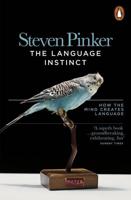Publisher's Synopsis
In From Signal to Symbol, Ronald Planer and Kim Sterelny propose a novel theory of language, proposing that modern language is the product of a long series of increasingly rich protolanguages evolving over the last two million years. Arguing that language and cognition coevolved, they give a central role to archaeological evidence and they attempt to infer cognitive capacities on the basis of that evidence, which they link in turn to communicative capacities. Countering other accounts, which move directly from archaeological traces to language, Planer and Sterelny show that rudimentary forms of many of the elements on which language depends can be found in the great apes and were part of the equipment of the earliest species in our lineage. After outlining the constraints a theory of the evolution of language should satisfy and filling in the details of their model, they take up the evolution of words, composite utterances, and hierarchical structure. They consider the transition from a predominantly gestural to a predominantly vocal form of language and discuss the economic and social factors that led to language. Finally, they evaluate their theory in terms of the constraints previously laid out. Series Overview: The Life and Mind series from the MIT Press aims to re-conceptualize the philosophy of biology and psychology by showcasing works that contribute to a meaningful cross-dialogue between philosophers and scientists. Books in the series focus on philosophical issues that arise from, and are relevant to, the practitioners in the behavioural, biological, and cognitive sciences.









